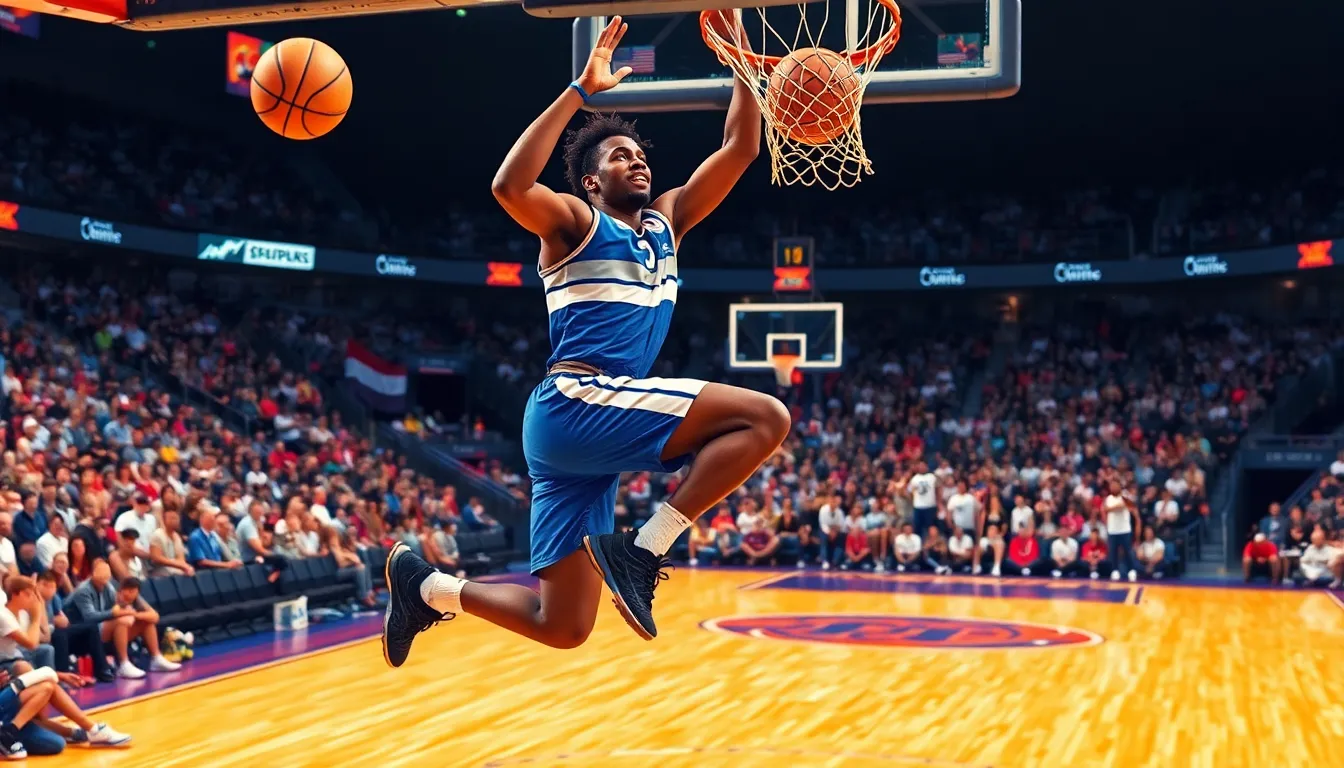Table of Contents
ToggleSports magazines have long been a staple for fans seeking in-depth coverage and insights into their favorite games and athletes. These publications offer a unique blend of analysis, interviews, and captivating stories that bring the world of sports to life. From the latest scores and stats to behind-the-scenes glimpses of athletes’ lives, sports magazines cater to a diverse audience, making them essential reading for enthusiasts.
As the landscape of sports media evolves, so do the features that keep readers engaged. Whether it’s exclusive interviews with rising stars or in-depth analysis of game strategies, these magazines continually adapt to meet the interests of their audience. Understanding the key features of sports magazines not only highlights their importance but also reveals how they shape the conversation around sports culture.
Overview of Sports Magazine Features
Sports magazines feature a variety of content aimed at engaging readers and enhancing their understanding of the sports world. Key features include:
- In-Depth Analysis: Analysts provide detailed examinations of strategies and performances, allowing readers to gain insights into game tactics.
- Exclusive Interviews: Exclusive conversations with athletes and coaches offer personal perspectives and stories that resonate with fans.
- Profiles and Biographies: In-depth profiles highlight athletes’ backgrounds, careers, and achievements, creating a connection between readers and their favorite figures.
- Feature Stories: In-depth feature articles explore unique themes within the sports community, such as resilience, triumph, and social issues affecting athletes.
- Event Coverage: Comprehensive coverage of major sporting events includes previews, recaps, and insights, keeping fans informed about ongoing competitions.
- Gear Reviews: Objective evaluations of sports gear and equipment assist athletes in making informed purchasing decisions.
- Health and Fitness Advice: Articles provide tips on training, nutrition, and recovery, supporting athletes at all levels in their physical well-being.
These features collectively enhance the reader’s experience, fostering a deeper appreciation for the sports they love. They also contribute to the evolving narrative and culture surrounding athleticism and competition.
Types of Sports Magazine Features

Sports magazines offer various features to engage readers and provide valuable insights into the athletic world. These include athlete profiles, event coverage, and expert analysis, each serving a unique purpose in enriching the overall reader experience.
Athlete Profiles
Athlete profiles highlight the personal and professional journeys of sports figures. These profiles include biographical information, career achievements, and insights into the athlete’s mindset. Profiles often showcase their upbringing, challenges faced, and triumphs that shaped their careers. By including quotes and anecdotes, profiles create a deeper connection between the reader and the athlete.
Event Coverage
Event coverage provides comprehensive reports on significant sporting events. These reports offer details like event schedules, key performances, and analysis of outcomes. Writers often include statistics, expert opinions, and post-event reflections, enhancing the reader’s understanding of the event’s impact. Coverage may also feature photo essays, capturing the atmosphere and emotions surrounding the event.
Expert Analysis
Expert analysis delivers in-depth evaluations of game strategies and player performances. Analysts dissect plays, tactics, and coaching decisions, offering insights into what contributed to successes or failures. Features often include charts, graphs, and video breakdowns to support conclusions. This type of content helps readers develop a more strategic appreciation for the sport, elevating their overall engagement.
Impact of Visuals in Sports Magazines
Visual elements play a crucial role in engaging readers and enhancing their experience with sports magazines. Effective use of photography, graphics, and layout can significantly impact the overall presentation of content.
Photography and Graphics
Photography and graphics serve as vital tools for storytelling in sports magazines. High-quality images capture the dynamic nature of sports, showcasing athletes in action and conveying emotions that words alone can’t express. Iconic moments from games, such as game-winning shots or triumphant celebrations, create memorable visuals that resonate with fans. Graphic elements, including infographics and illustrations, further elucidate statistics and game strategies, making complex information more digestible. Together, these visual components not only attract readers but also enhance comprehension and retention of the material presented.
Layout and Design
Layout and design comprise foundational aspects of sports magazines that guide reader engagement. A well-structured layout facilitates smooth navigation, allowing readers to easily find articles and features of interest. Strategic placement of images alongside text breaks the monotony and draws attention to significant highlights. Consistent design elements, such as fonts, color schemes, and spacing, contribute to a cohesive reading experience. Enhanced readability through effective layout encourages longer engagement, fostering a deeper connection to the content. Well-designed magazines not only captivate visually but also enhance information delivery, making sports content more enjoyable and accessible.
Digital Transformation in Sports Magazines
Digital transformation plays a crucial role in the evolution of sports magazines, reshaping how content reaches and engages audiences. Online platforms and social media channels redefine traditional publishing, enhancing the accessibility and interactivity of sports journalism.
Online Features
Online features significantly expand the scope of sports magazines, providing interactive content and live updates. Websites now host multimedia elements such as videos, podcasts, and real-time statistics that enrich reader experience. Digital editions enable rapid updates on breaking news, ensuring timely coverage of events. Furthermore, online articles often include hyperlinks to relevant data, allowing readers to explore topics in-depth. This interactivity fosters a more engaging environment that draws readers back for continuous updates.
Social Media Integration
Social media integration amplifies the reach of sports magazines by facilitating direct communication between publications and their audiences. Platforms like Twitter, Instagram, and Facebook serve as essential tools for sharing articles and engaging in discussions. Magazines often promote exclusive content or sneak peeks via social channels, enticing followers to subscribe or visit their websites. Additionally, social media allows for instant feedback from readers, enabling magazines to adapt their content based on audience preferences. This two-way interaction not only strengthens community ties but also enhances the visibility and relevance of sports magazines in a competitive landscape.
Sports magazines play a vital role in shaping the landscape of athletic culture. By offering a blend of in-depth analysis interviews and captivating stories they engage readers and enhance their understanding of the sports world. The evolution of these publications into digital formats further expands their reach and interaction with audiences.
High-quality visuals and well-structured layouts not only attract attention but also improve content delivery. As sports magazines continue to adapt to changing technologies and audience preferences they remain indispensable resources for fans seeking a deeper connection to their favorite sports and athletes. The future of sports magazines looks bright as they continue to innovate and inspire.




